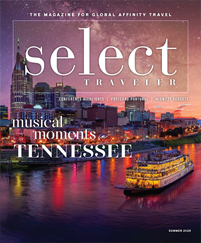If you want your affinity travel program to survive in the long term, you’re going to have to bring in some new blood.
Banks, universities and other community organizations have long used travel clubs as important loyalty-building tools among their membership. And by necessity, many of the programs and trips offered tend to target older members who have the time and the means to travel. But as these organizations seek to expand their membership base, many affinity planners are finding it necessary to attract younger travelers to join their programs.
Attracting younger travelers can inject a lot of vitality into a travel organization. But it doesn’t always come easily, especially for planners who have been doing business the same way for a long time. Here are five tips to help you craft products and messages that will appeal to more youthful members of your community.
Take shorter trips.
The most important action you can take to make your travel program more attractive to younger travelers is to plan shorter trips. Younger travelers, especially those who are still working, have limited vacation time and are most interested in trips that take a week or less. To help them, consider beginning and ending your trips on weekends so they only have to take five vacation days. And try a different mode of transportation: Younger people are often much more comfortable flying than previous generations are, so you can save time on a trip by flying to the destination instead of busing from your hometown.
Visit hip destinations.
Travelers of different ages are interested in visiting different kinds of places. You may have some tried-and-true destinations that always do well with people in their 60s and 70s, but many of those places won’t appeal in the same way to people in their 40s and 50s. In general, younger travelers will be more attracted to international destinations and big cities, places that older travelers may not feel comfortable visiting. And they’ll be looking for more exciting activities, with less emphasis on homespun nostalgia and passive entertainment.
Plan around events.
If you find it difficult to attract younger travelers to run-of-the-mill tours, try planning your trips around events and occasions of interest to them. This could be a major sporting event, like the Super Bowl or the Kentucky Derby, or one of your favorite college team’s away games. Alternatively, you could build a tour around a major music festival, a film festival or some other high-profile event. You’ll likely end up paying more for hotels and other services during these peak-demand times, but if you’re offering access to a bucket-list experience, your travelers won’t mind paying extra.
Increase free time.
For many traditional senior travelers, the best tours are those that include the most planned activities. But younger travelers don’t think that way. They want the convenience of packaged travel without the limitations of a rigid itinerary. So work with your tour operators and host cities to put together itineraries that include lots of free time. You can still have one or two activities together each day, including some memorable group meals, but younger travelers will appreciate having a variety of activity options, as well as the freedom to explore a destination on their own.
Tweak your image.
It is said that perception is reality, and if the younger people in your organization perceive the travel program as targeting older folks, they won’t likely want to join. To make your group more inclusive, start by looking at your club name and making sure it doesn’t communicate old age. Next, look at the marketing materials you send out. Try to include pictures of younger people and more exciting activities in your brochures, flyers and emails. And make sure you’re reaching out to younger people with a clean website and active social media accounts.









